When it comes to watering seedlings, knowing when and how can spell the difference between plant life and plant death. Generally, seedlings should be watered every 1 to 3 days once the soil begins to feel dry.
The best way to water your seedlings is to water the soil and not the plant itself. Watering the soil ensures that moisture reaches the roots and does not stay on the leaves, which can cause fungal issues down the line.
To help you out even further, we’ll explore the details of the watering frequency as well as the correct way to water your seedlings. Let’s begin!
How Often You Need to Water Your Seedlings
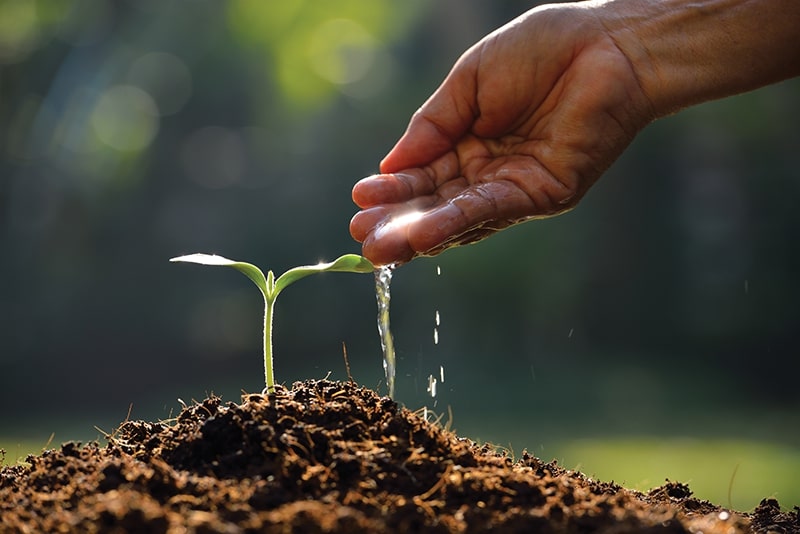
How often you water seedlings depends on things like the type of plant, the soil, and the environment. The key is to keep the soil consistently moist but not soaked.
Typically, you might need to water seedlings every few days, but it’s important to check the soil regularly and adjust as needed. Factors such as temperature, humidity, and container size also play a role in how often you should water your seedlings.
How to Check for Dry Seedlings
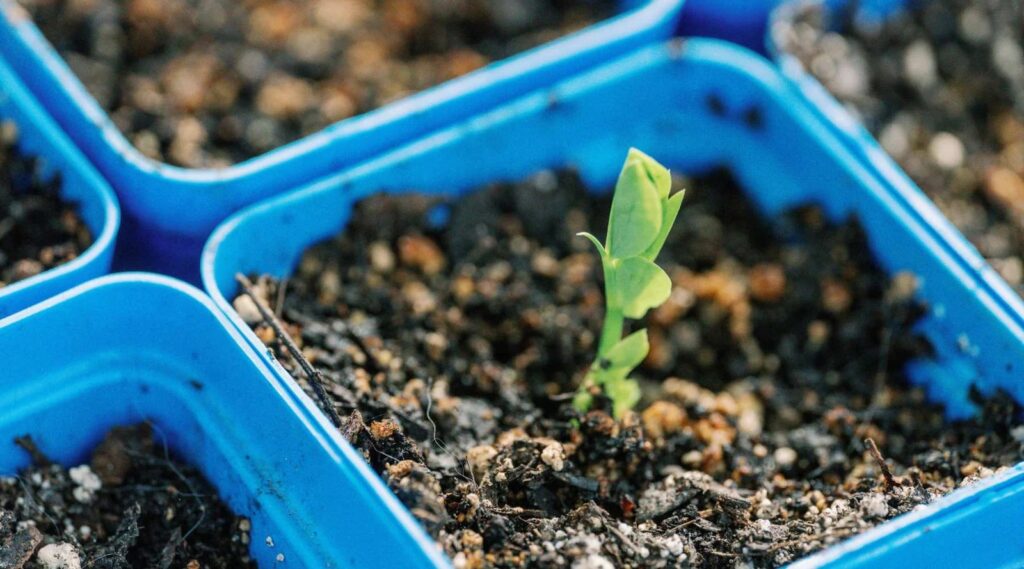
| Level of Expertise | Beginner to Intermediate ●●○○○ |
| Tools or Materials Needed | Your finger or a moisture meter |
| Estimated Costs | Minimal (if using finger method), moderate for a moisture meter |
We’ll be tackling two methods for checking dry seedlings: the finger method and the moisture meter method. You can pick whichever method you find best.
The Finger Method
Insert your index finger into the soil up to the first knuckle or about an inch. Feel the soil’s moisture at this level.
If it feels dry at this point, you need to water the soil of the seedling. Just remember to avoid watering in case the soil still feels moist so as not to harm your seedling.
The Moisture Meter Method
Make sure your moisture meter is a good one and buy it from a reliable supplier. Insert the probe of the moisture meter into the soil according to the product instructions.
The meter will provide a reading indicating the moisture level. Water the seedlings when the moisture level falls into the “dry” range on the meter.
The Dangers of Overwatering
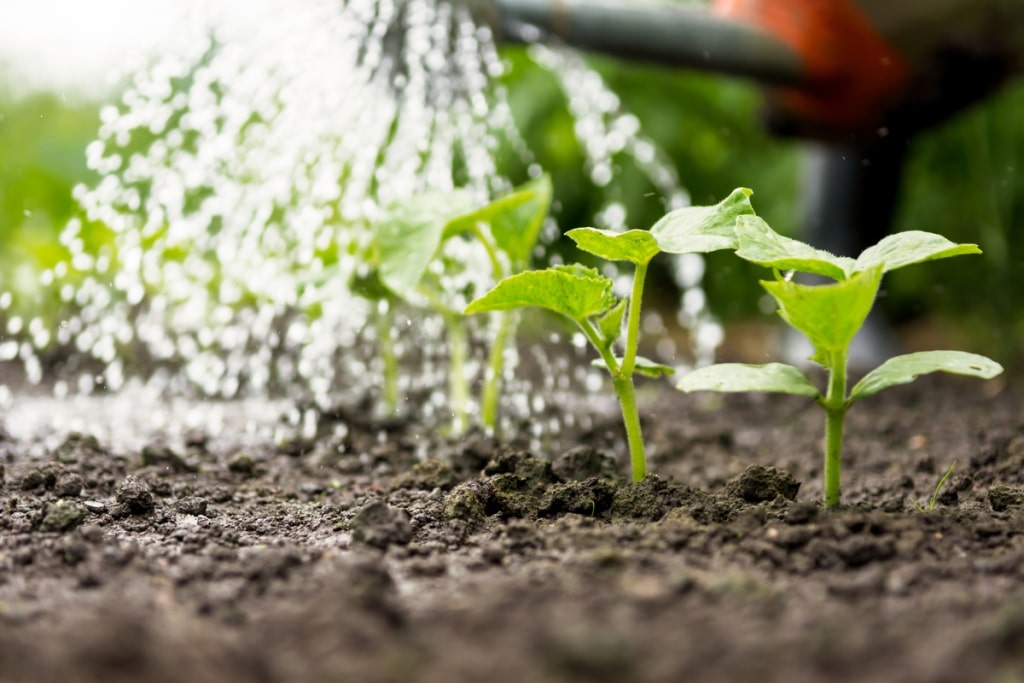
There’s something to be said about giving seedlings too much water – it can prove dangerous. Root rot, fungal issues, and poor health are just some of the problems overwatering causes.
Root Rot
Too much water can drown seedlings, causing roots to rot. When the roots start to rot, it can harm the seedling’s ability to absorb nutrients and water, eventually causing wilt and plant death.
Reduced Nutrient Uptake
Overwatering causes the nutrients in the soil to leach. When the nutrients are scarce, the seedling can end up with stunted growth due to poor health.
Fungal Diseases
Constant moisture encourages fungal pathogens to thrive. Opportunistic issues like powdery mildew and various molds can quickly spread and infect overwatered plants with harmful – and sometimes fatal -diseases.
Stunted Growth
Due to roots drowning or rotting, the seedlings won’t be able to breathe, drink, or take in nutrients. The result? Underdeveloped and stunted seedling growth.
Yellowing Leaves
When the roots are swimming in water without air to breathe, the situation can cause the seedling to develop yellowing leaves. This is a clear sign of plant stress and, when left alone, can lead to leaf drop and possible plant death.
Pest Infestations
Too much water attracts pests like fungus gnats and other insects that love damp or wet conditions. Plus, these pests make seedling health worse by feeding on it – introducing more issues.
The Dangers of Underwatering
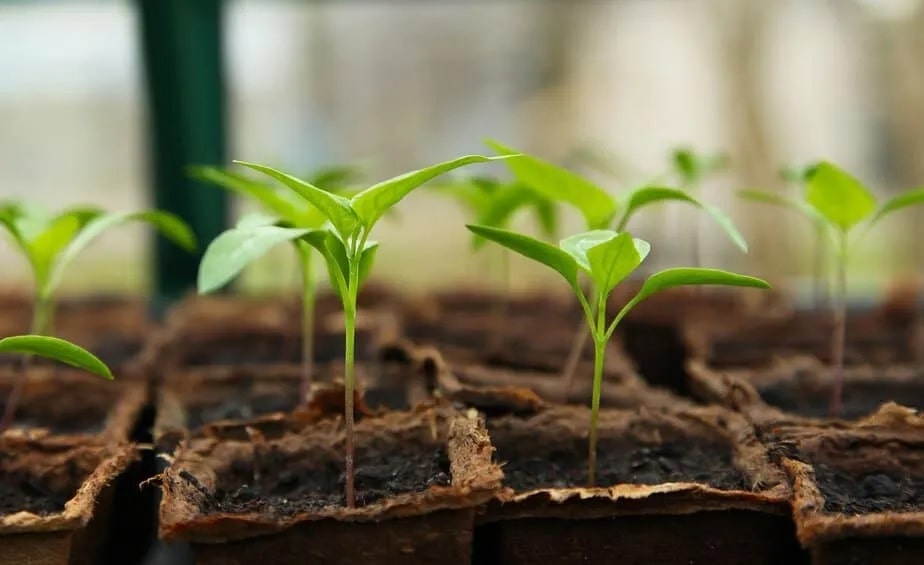
One might think it’s better to be underwater than overwater seedlings, but this doesn’t always hold water – pardon the pun. Underwatering seedlings also have issues that cause development issues, root damage, and increased stress.
Stunted Growth
When your seedling is parched and the roots are pretty dry often, it gets to have development issues due to lack of water and nutrients. Stunted growth is one of the long-term results of underwatered seedlings.
Wilting
The most immediate effect of underwatered seedlings is visible wilting. This is because the lack of water causes plant cells to lose strength, which can be an irreversible issue that could lead to plant death.
Reduced Nutrient Uptake
Water is needed to deliver nutrients from the soil to the roots and various parts of the plant. When there’s not enough water, the plant won’t be able to take in nutrients and can end up with developmental issues.
Increased Stress
When seedlings are underwatered, they get stressed. Stressed seedlings attract pests and make the seedlings susceptible to diseases – complicating the issue even more.
Leaf Browning and Curling
Plants are like humans – they get parched too. When water isn’t enough, seedlings show their dehydrated state with browning and curling leaves as a defense mechanism for water conservation.
Damage to Root System
Dry roots don’t make a healthy seedling. Once the roots reach past their survival state, the lack of water can end up damaging the entire root system and kill the seedling.
Increased Sensitivity to Environmental Stress
Underwatered seedlings become stressed and more sensitive to environmental factors. Even the smallest change in temperature or sunlight exposure can damage dehydrated seedlings.
Tips on Watering Seedlings
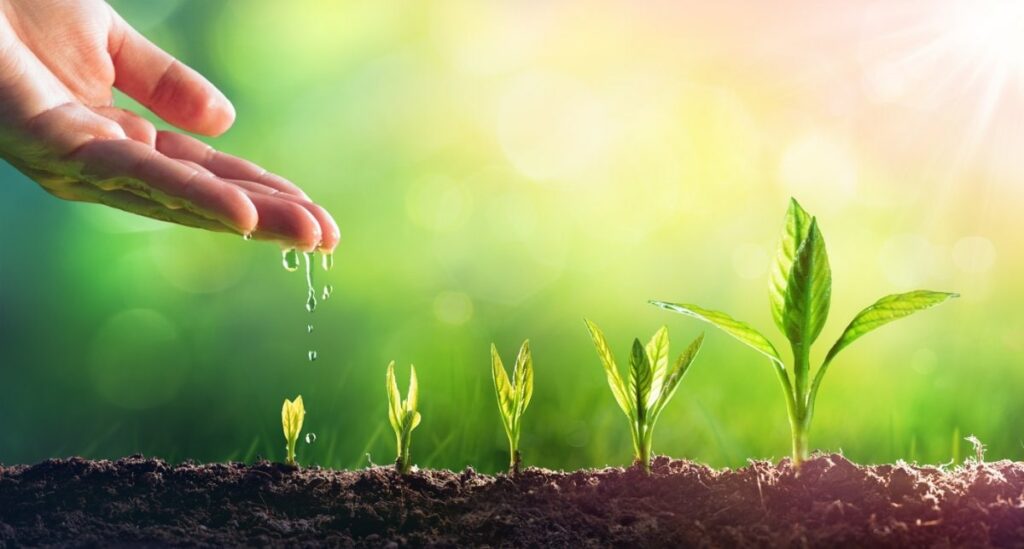
To help you out even further, we’ve got a list of watering techniques to take your skills to a different level. Here are some factors you’ll need to consider when watering your seedlings.
Maintain Watering Consistency

Keep a regular watering schedule. When you fluctuate between underwatering and overwatering, the irregularity can stress your seedlings out.
Water at the Base
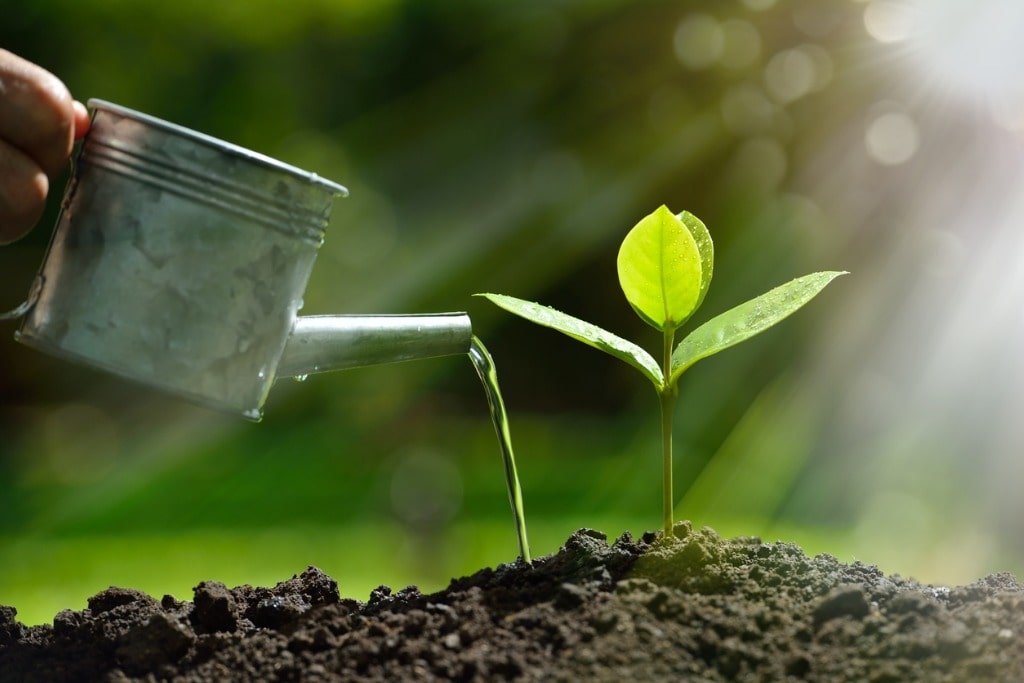
Instead of watering your seedlings from the top, water them at the base. Watering the soil near the base will prevent fungal issues and ensure that the water goes directly to the roots.
Use Drip Irrigation
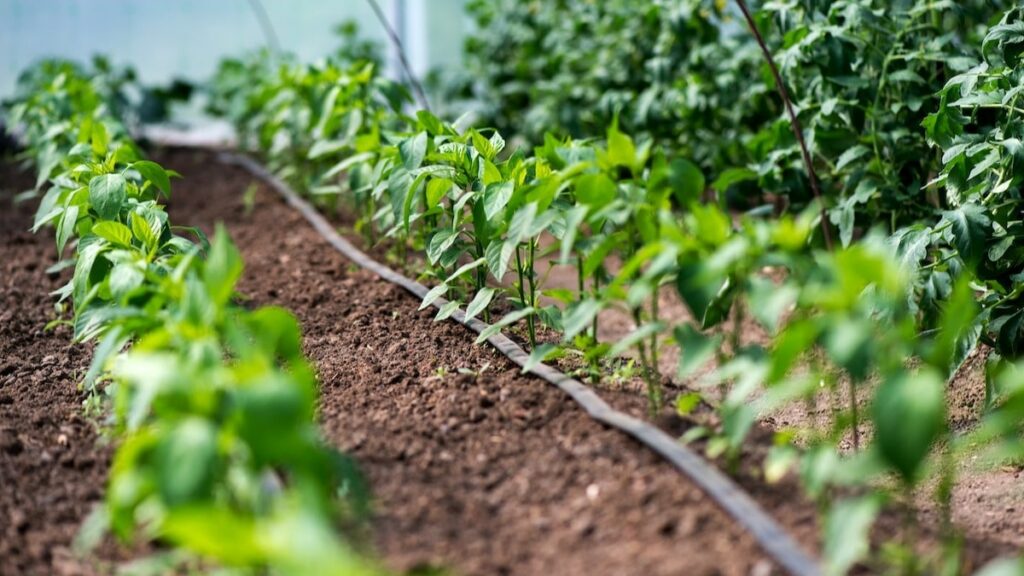
Drip irrigation provides precise water delivery to seedlings, minimizing overwatering and promoting efficient absorption at the root zone. This method also reduces the risk of soil-borne diseases and conserves water by delivering it directly to plants.
Water from the Bottom
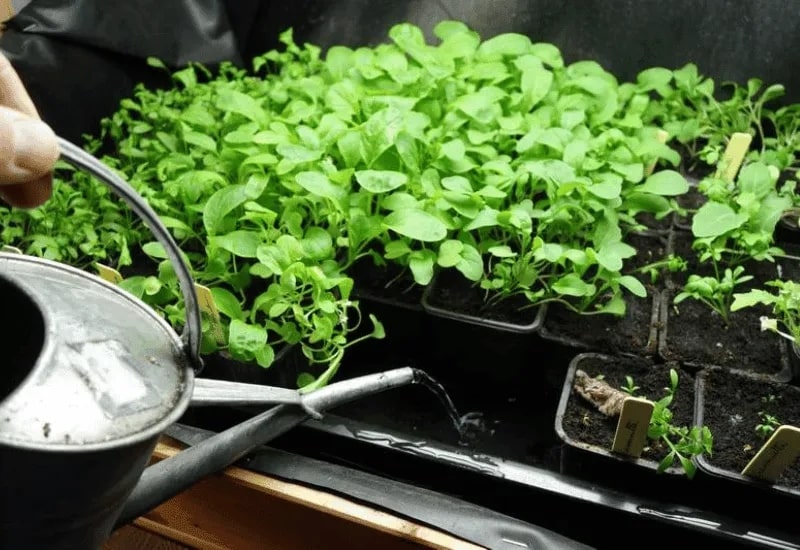
Bottom watering promotes healthier root development in seedlings by encouraging roots to grow downward. It also helps prevent fungal diseases by keeping the foliage dry, reducing the risk of moisture-related issues.
Use the Right Watering Can

If you’re not using a drip irrigation system, choose a watering can with a fine rose attachment or a small spout. The water will be better dispersed plus the gentler flow prevents the soil from getting disturbed.
Water in the Morning
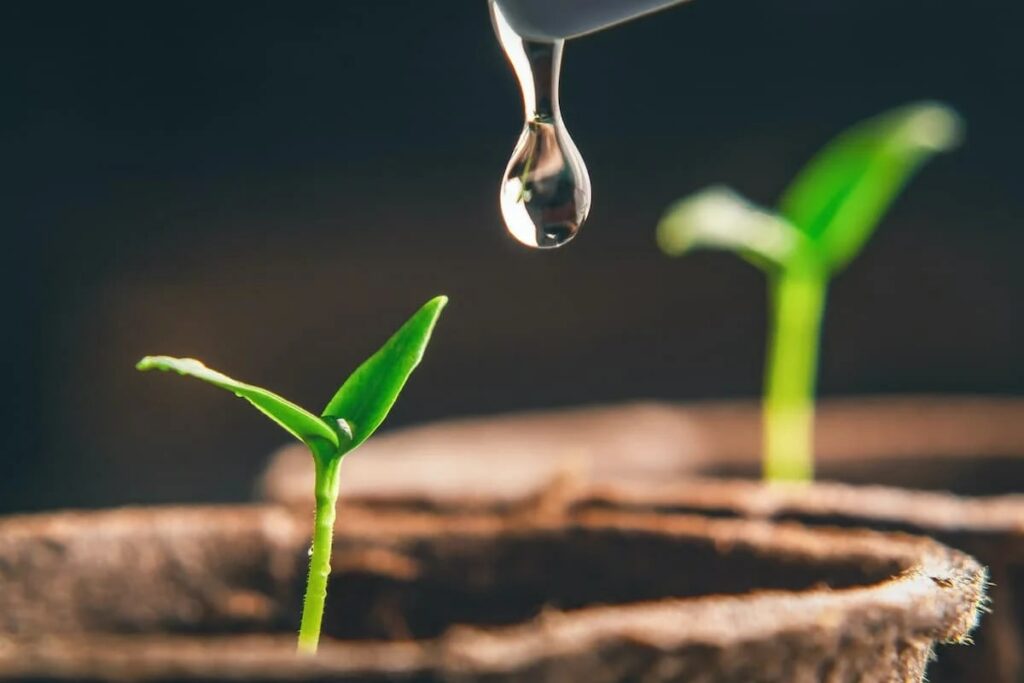
When you water your seedlings in the morning, the excess moisture evaporates during the day. This reduces the risk of fungal diseases that thrive in damp or wet conditions.
Adjust Watering to Plant Needs

Different plants have different water requirements. Make sure you have the specific needs of the seedlings you’re growing and adjust watering accordingly.
Mulch
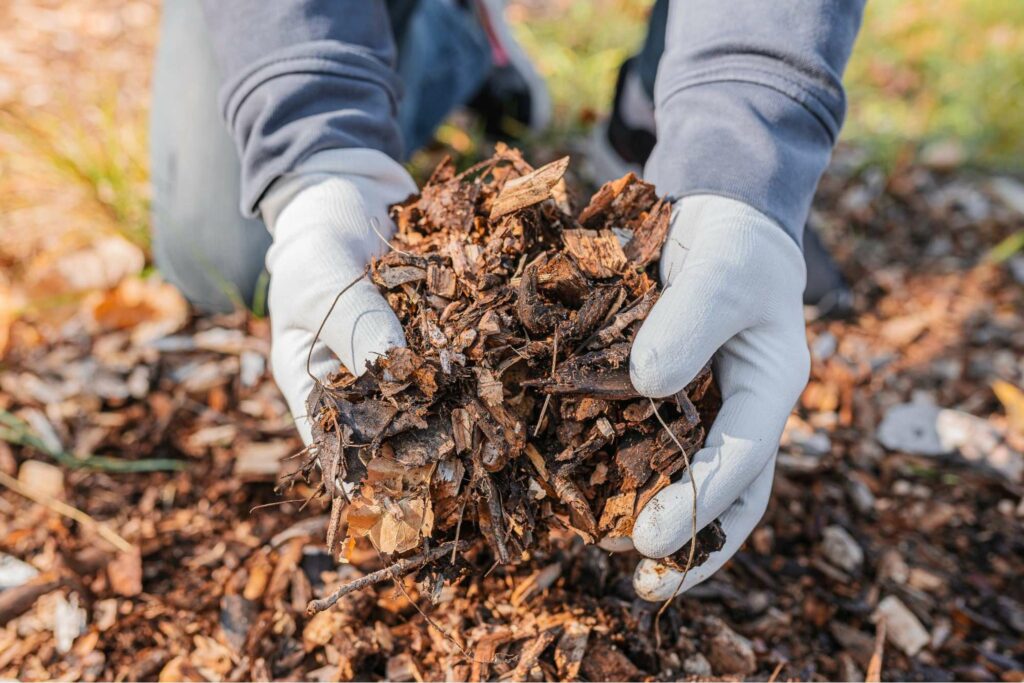
Apply a layer of organic mulch around the seedlings. Mulch helps retain soil moisture, suppress weeds, and regulate soil temperature.
Water Deeply
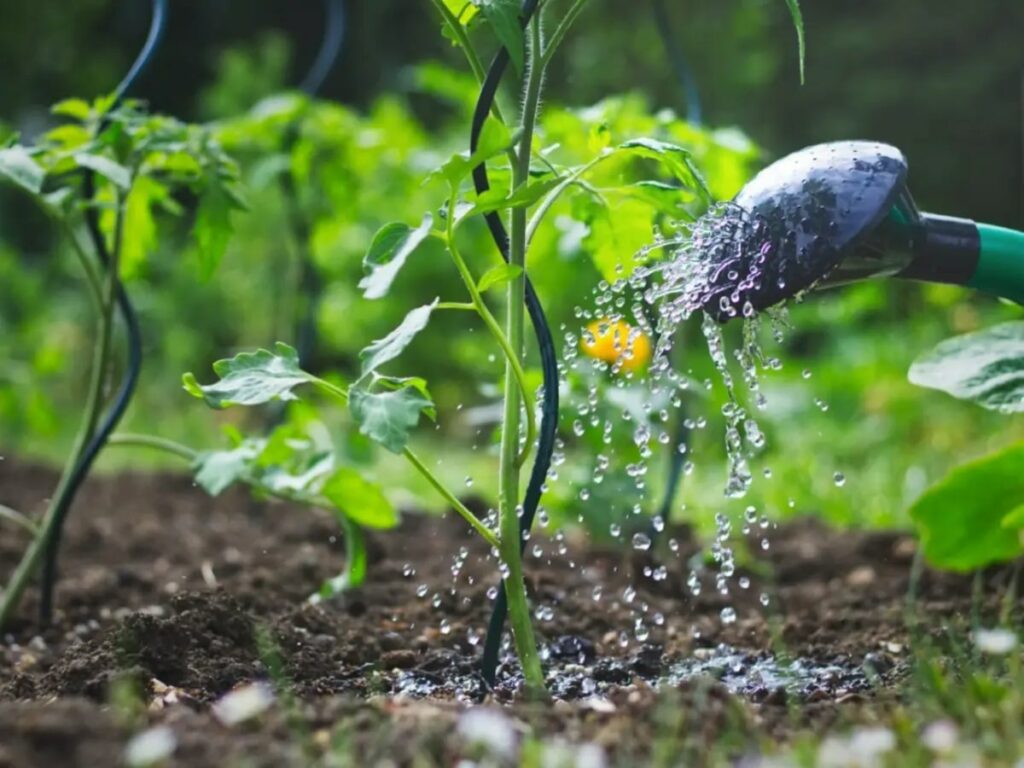
You can encourage deep root growth by watering your seedlings thoroughly. Shallow watering results in a shallow root system that makes seedlings more susceptible to stress.
Adjust Any Grow Lights
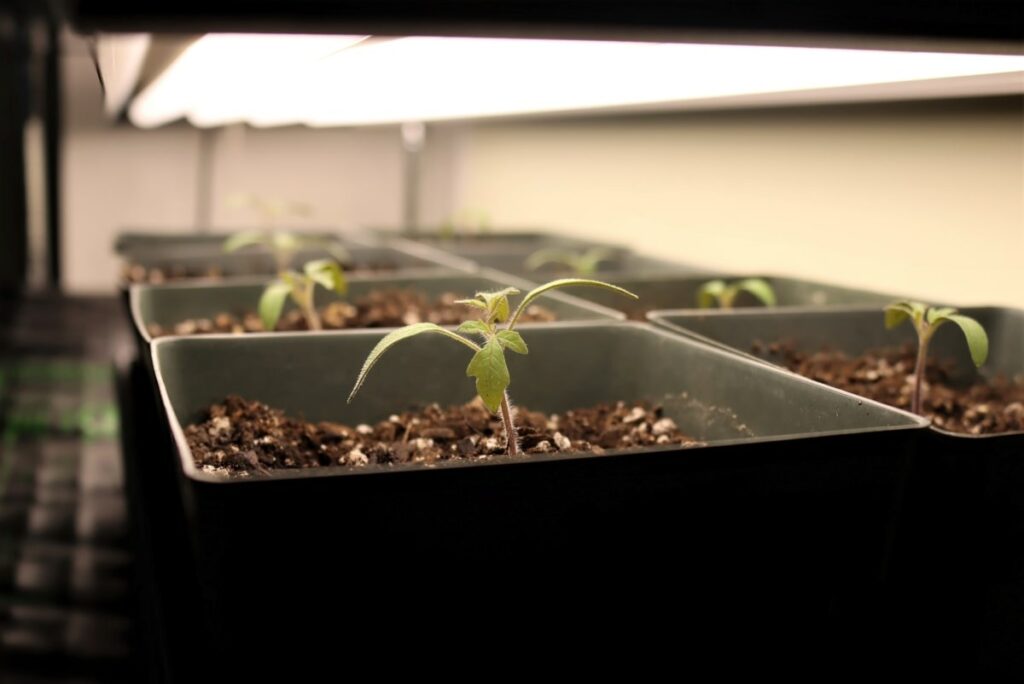
Keep grow lights at least six inches above seedlings to prevent them from drying out. Adjust the height of the lights to maintain an optimal distance from the plants.
Water Seedlings Before Transplanting
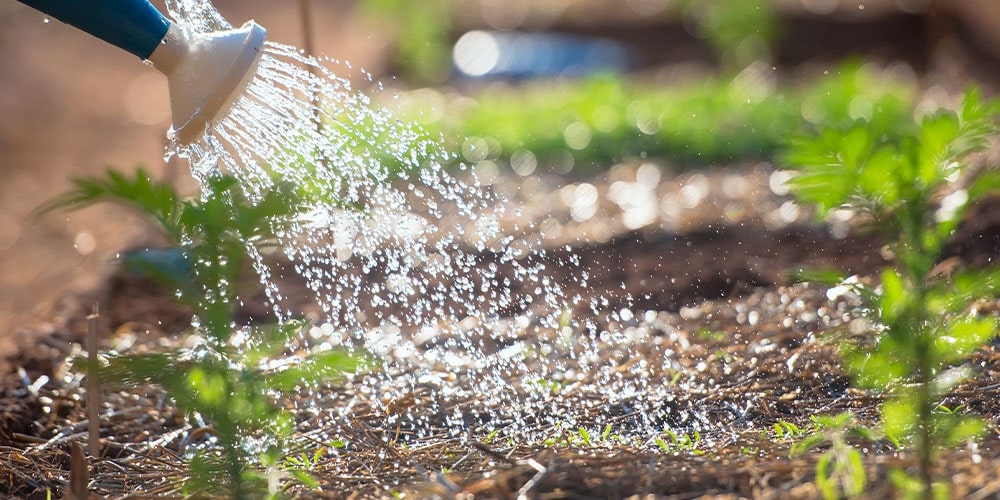
If you’re transplanting seedlings, water them well before transplanting them in their new homes. Doing so will help minimize transplant shock.
Group Plants with Similar Watering Needs
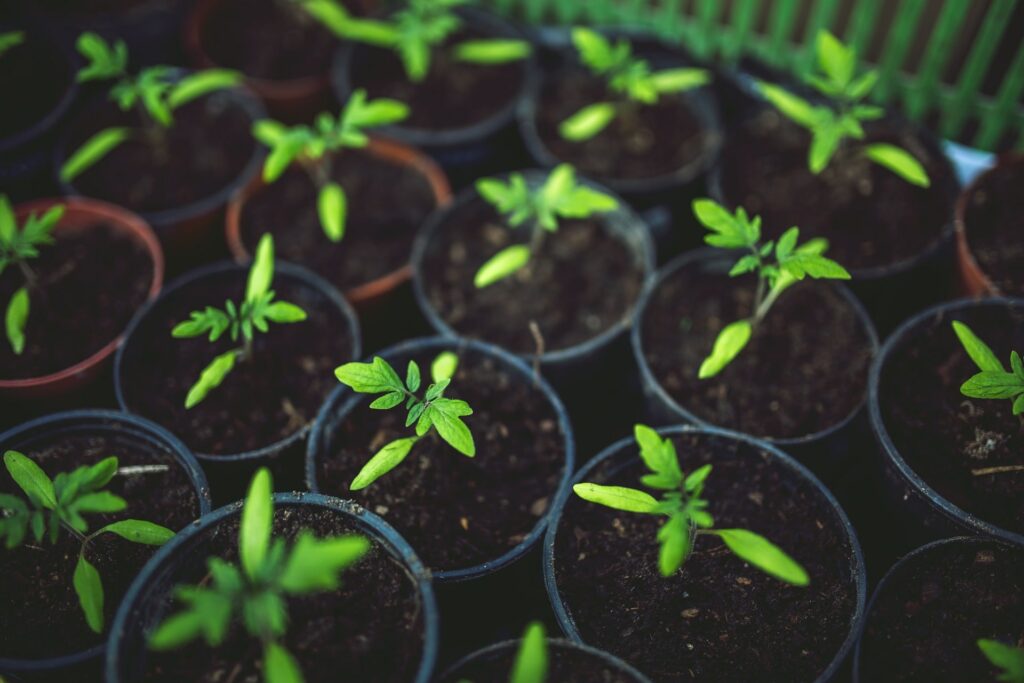
Grouping plants with similar water requirements makes watering them easier. At the same time, you get to make sure that each group of plants gets the right amount of water that they need.
Thin Out Seedlings
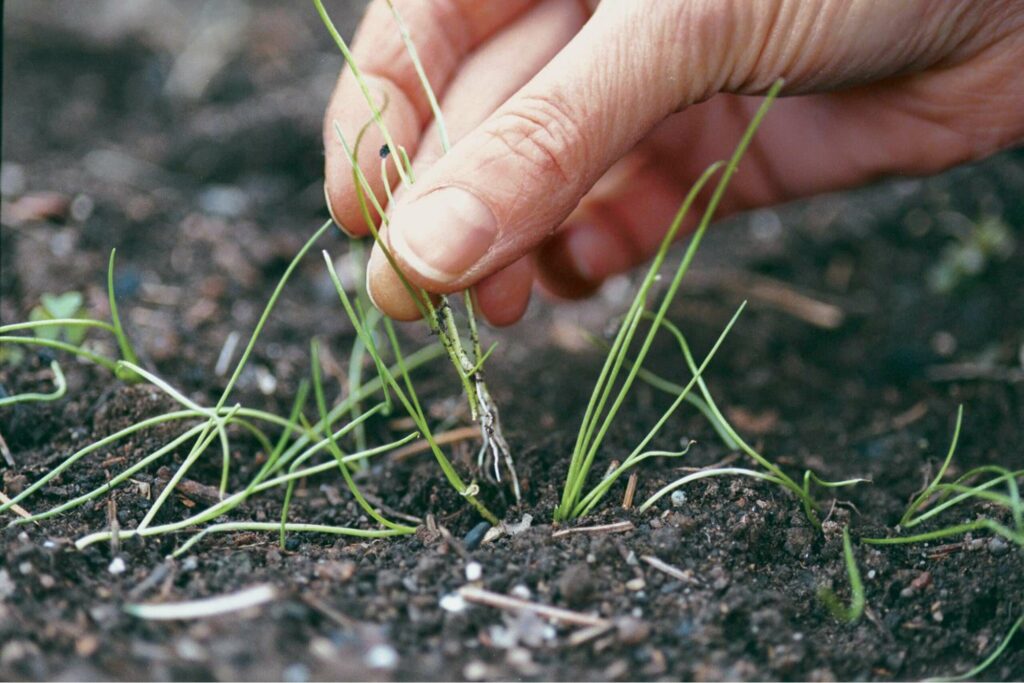
Thinning seedlings out prevents root competition for water. After the development of true leaves, choose the healthiest seedling and keep one per cell, using pruning shears or gingerly removing them by hand if the roots aren’t too entangled.
Adjust for Weather Conditions
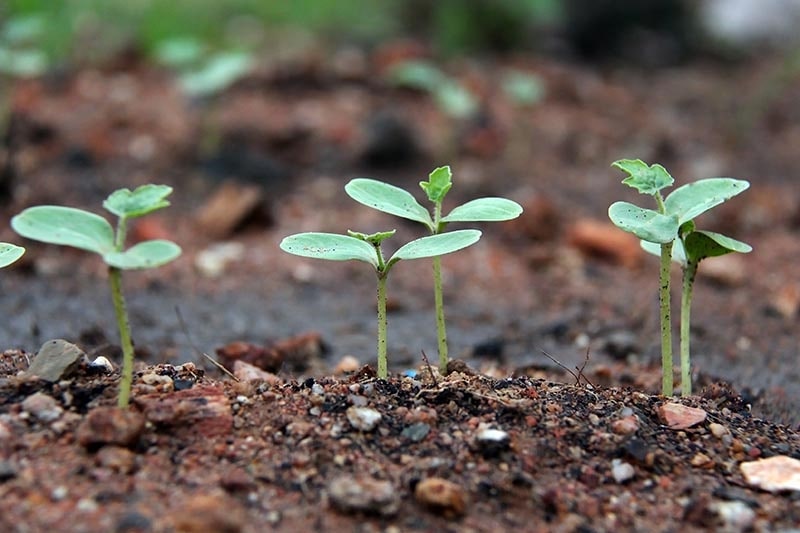
Be mindful of weather conditions. Hot and windy days require more frequent watering, while cool and cloudy days need less.
How to Keep Seedlings Hydrated
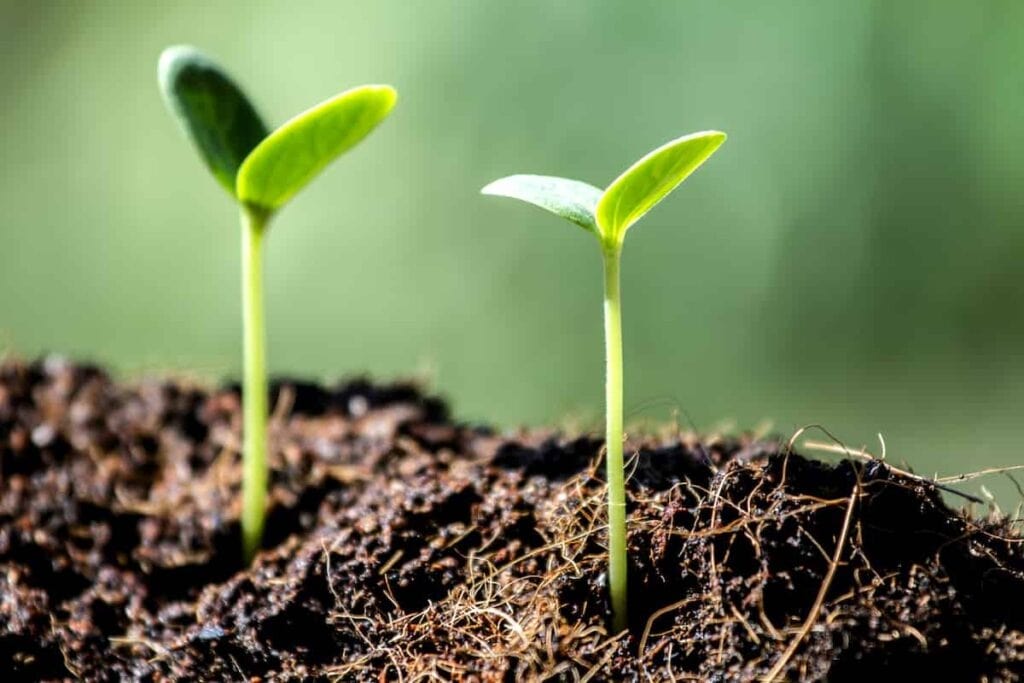
| Level of Expertise | Beginner to Intermediate ●●○○○ |
| Tools or Materials Needed | Watering can, moisture meter, mulch, humidity dome (if starting seedlings indoors), windbreak or shelter for outdoor seedlings |
| Estimated Costs | Minimal to moderate, depending on the availability of tools and materials |
Seedlings are vulnerable during the early stages, and watering them ensures better survival rates. Here’s how you can keep your seedlings healthy and hydrated.
How to Keep Seedlings Hydrated
1. Maintain consistent soil moisture.
You can check the soil moisture with the finger method or the moisture meter method. Be sure not to underwater or overwater.
2. Keep a regular watering schedule.
Make sure the schedule’s based on the specific needs of the seedlings and the environmental conditions. Seedlings usually do better with more frequent but gentle watering than older, grown-up plants.
3. Water at the base of the seedlings.
Avoid overhead watering, especially in the evening. This will help you to reduce the risk of fungal diseases.
4. Water deeply for deep root growth.
Shallow watering can result in a shallow root system that’s more vulnerable to stress.
5. Apply a layer of organic mulch around the seedlings.
Mulch helps retain soil moisture, suppress weeds, and regulate soil temperature.
6. Make sure there’s proper spacing between seedlings.
Proper spacing prevents seedling root competition for water and nutrients. When seedlings are too close together, they might not get enough water evenly.
7. Group seedlings with similar water requirements together.
This makes watering easier to handle. Plus, it guarantees that each group gets the right amount of water.
8. Adjust watering based on the seedling growth stage.
Adjust how often you water seedlings as they grow. Also, take into account factors like size and root development.
9. Be aware of external factors like wind, temperature, and humidity.
Protect outdoor seedlings from wind by providing a windbreak or shelter as it helps reduce soil drying and water loss through evaporation. Adjust watering frequency based on the prevailing weather conditions.
Planter’s Tips
- When starting seedlings indoors, use a humidity dome for a moist environment that aids germination.
- Choose well-draining soil that retains water without becoming waterlogged for optimal root health.
FAQs
Do new seeds need to be watered every day?
New seeds do not need to be watered every day. The frequency of watering depends on factors such as the type of seed, soil conditions, and environmental factors.
Should seedlings be in direct sunlight?
Seedlings should not be in direct sunlight. Instead, gradually increase seedlings’ exposure from partial to direct sunlight to avoid stress and sunburn.
Also, be mindful of each plant’s sunlight needs for optimal growth.
What is the best water for seedlings?
The best water for seedlings is clean, room-temperature water. Use additive-free water like rainwater or filtered tap water for seedlings.
Make sure the water temperature is moderate to avoid shocking the young plants.
Do seeds need a lot of water to germinate?
Seeds do not need a lot of water to germinate. It’s best to provide seeds with moderate moisture for germination and avoid excess water to prevent developmental issues.
Why is too much water bad for seed germination?
Too much water is bad for seed germination because it can lead to waterlogged conditions in the soil. Waterlogging restricts soil aeration and prevents the seeds from getting oxygen.





